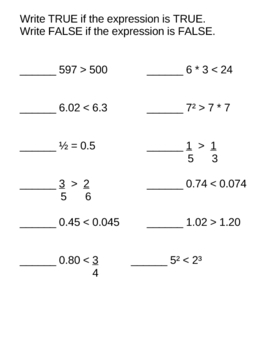Specific Heat Equations Worksheet
This specific heat equations worksheet is designed to provide practice problems for students studying physics or chemistry. By using real-world examples and a step-by-step approach, this worksheet helps students understand and apply the concept of specific heat in calculations. Whether you are a high school student preparing for an exam or a college student needing extra practice, this worksheet is a valuable resource for enhancing your understanding of specific heat equations.
Table of Images 👆
More Other Worksheets
Kindergarten Worksheet My RoomSpanish Verb Worksheets
Cooking Vocabulary Worksheet
DNA Code Worksheet
Meiosis Worksheet Answer Key
Art Handouts and Worksheets
7 Elements of Art Worksheets
All Amendment Worksheet
Symmetry Art Worksheets
Daily Meal Planning Worksheet
What is specific heat?
Specific heat is the amount of heat energy required to raise the temperature of a unit mass of a substance by one degree Celsius (or one Kelvin). It is a characteristic property of a material and is measured in joules per kilogram per degree Celsius (J/kg°C) or in calories per gram per degree Celsius (cal/g°C).
What is the equation for specific heat?
The equation for specific heat (C) is q = mc?T, where q represents the heat transferred, m is the mass of the substance, ?T is the change in temperature, and c is the specific heat capacity of the substance.
How is specific heat measured?
Specific heat is typically measured by conducting an experiment that involves changing the temperature of a known mass of a substance and measuring the amount of heat required to do so. This can be done using a calorimeter, a device that measures the heat exchange during a temperature change. The specific heat capacity of a substance is calculated by dividing the amount of heat added or removed by the mass of the substance and the change in temperature.
What units are used for specific heat?
The units typically used for specific heat are joules per kilogram kelvin (J/kg*K) or calories per gram degree Celsius (cal/g°C).
How does the specific heat of a substance affect its temperature change?
The specific heat of a substance determines how much heat energy is required to raise its temperature. Substances with a higher specific heat require more energy to increase their temperature compared to those with a lower specific heat. This means that a substance with a higher specific heat will experience a smaller change in temperature for a given amount of heat input compared to a substance with a lower specific heat. Essentially, substances with a higher specific heat capacity heat up and cool down more slowly than substances with lower specific heat capacities.
What is the relationship between specific heat and heat capacity?
Specific heat and heat capacity are related as specific heat is the amount of heat required to raise the temperature of a unit mass of a substance by one degree Celsius, while heat capacity is the amount of heat required to raise the temperature of a substance by one degree Celsius. Essentially, heat capacity is the measure of how much heat a substance can hold, while specific heat is the measure of how much heat is needed to change the temperature of a substance. Heat capacity is the product of specific heat and mass, indicating the total heat capacity of a substance.
How does the specific heat of water compare to other substances?
Water has a relatively high specific heat compared to most other substances, which means it can absorb a significant amount of heat before its temperature changes. This property makes water crucial for moderating temperature changes in the environment and in living organisms. It also explains why coastal areas have milder climates compared to inland areas, as water can absorb a large amount of heat from the sun during the day and release it slowly at night.
How does the specific heat of a substance affect its ability to store and transfer heat?
The specific heat of a substance indicates the amount of heat energy required to raise the temperature of a unit mass of that substance by 1 degree Celsius. A substance with a high specific heat requires more heat energy to raise its temperature compared to a substance with a low specific heat. Therefore, substances with a higher specific heat have a greater ability to store heat as they can absorb more energy without a significant change in temperature. Additionally, substances with a high specific heat can also transfer heat more efficiently as they can release or absorb more heat energy without experiencing drastic temperature fluctuations.
How can the specific heat equation be used to calculate a substance's unknown specific heat?
The specific heat equation, Q = mc?T, can be rearranged to solve for the unknown specific heat (c) of a substance. By measuring the amount of heat supplied or lost (Q), the mass of the substance (m), and the change in temperature (?T), one can substitute these values into the equation and solve for the specific heat of the substance. This allows for the determination of the substance's specific heat without direct measurement, making it a useful tool in thermodynamics and calorimetry experiments.
What are some practical applications of specific heat equations in everyday life?
Specific heat equations are used in various practical applications in everyday life, such as in cooking to determine the amount of energy required to heat or cool food, in heating and cooling systems to calculate energy efficiency and optimal temperature control, in the design of thermal insulation materials to regulate temperatures in buildings, and in the automotive industry to determine the cooling needs of engines and vehicle components. Additionally, specific heat equations are utilized in the medical field to understand how the body regulates temperature and in environmental science to study climate change and weather patterns.
Have something to share?
Who is Worksheeto?
At Worksheeto, we are committed to delivering an extensive and varied portfolio of superior quality worksheets, designed to address the educational demands of students, educators, and parents.






































Comments